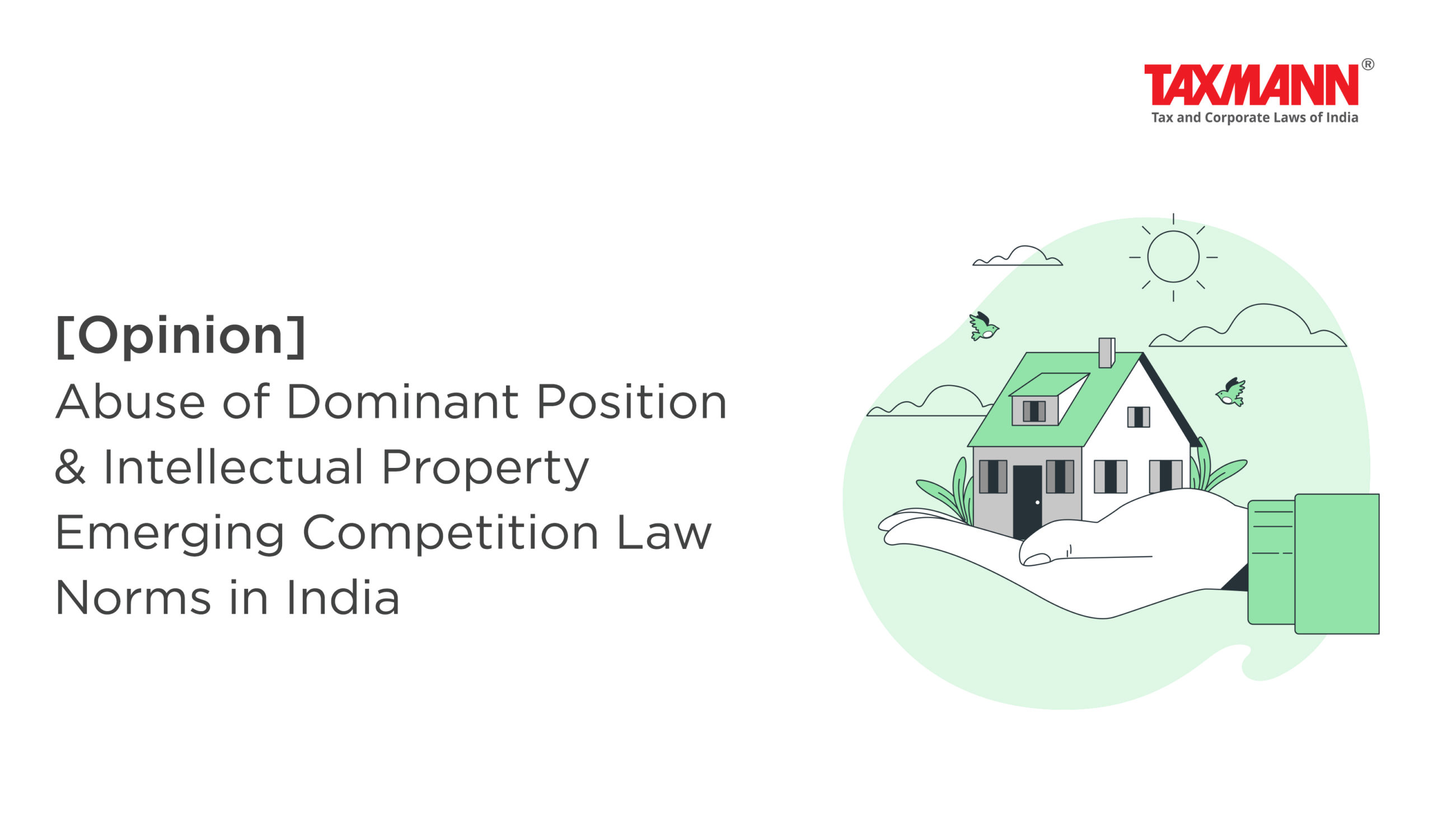[Opinion] Abuse of Dominant Position & Intellectual Property | Emerging Competition Law Norms in India
- Blog|News|Competition Law|
- 2 Min Read
- By Taxmann
- |
- Last Updated on 31 May, 2023

Intellectual property laws like the Patents Act confer exclusive rights upon their owners, while the role of competition law is to keep the markets open; this leads to a simplistic presumption that there is an inherent conflict between the objectives of competition law and IP laws. While a specific mention of intellectual property is incorporated in section 3 of the Competition Act dealing with anti-competitive agreements, section 4 related to the abuse of dominant position is silent on this issue.
Section 3(5)(i) of the Competition Act creates a carve out for IP laws and provides a position of deference to those listed IP by providing an exemption from section 3 if the use of IP rights granted under the specified laws is reasonable and necessary to protect the IP. Therefore, this exemption from the operation of section 3 is not a blanket one and comes with riders. This exemption is limited to the anti-competitive agreements falling under Section 3 of the Competition Act and by itself does not apply to abuse of dominant position under Section 4 of the Act. Competition Law Review Committee (CLRC) 2019 proposal to incorporate IP exemption in section 4 has not been realised through Competition Amendment Act, 2023.
Establishing Intellectual Property Induced Dominance
Explanation to section 4 defines the dominant position as the position of strength in a relevant market enjoyed by an enterprise, which enables that enterprise to operate independently of competitive forces prevailing in the relevant market; or affect its competitors or consumers or the relevant market in its favour. It is pertinent to note that only abuse of the dominant position in a relevant market violates the Competition Law and the law does not frown upon enjoying a dominant position. Section 19 (4) of the Competition Act provides a list of factors which the competition authority takes into account while analysing whether an enterprise enjoys a dominant position or not. Although the list is not exhaustive, yet it is broad enough to cover a host of factors. One of the factors listed is the monopoly or dominance gained by virtue of a statute. This factor clearly points towards intellectual property induced dominance. One has to be wary of the fact that mere exclusivity provided by intellectual property should not be seen as a situation of market power or dominance. Various factors and relevant market characteristics need to be delineated and taken into account to ascertain whether IP is one of the factors providing market power leading to dominance.
Click Here To Read The Full Article
Disclaimer: The content/information published on the website is only for general information of the user and shall not be construed as legal advice. While the Taxmann has exercised reasonable efforts to ensure the veracity of information/content published, Taxmann shall be under no liability in any manner whatsoever for incorrect information, if any.

Taxmann Publications has a dedicated in-house Research & Editorial Team. This team consists of a team of Chartered Accountants, Company Secretaries, and Lawyers. This team works under the guidance and supervision of editor-in-chief Mr Rakesh Bhargava.
The Research and Editorial Team is responsible for developing reliable and accurate content for the readers. The team follows the six-sigma approach to achieve the benchmark of zero error in its publications and research platforms. The team ensures that the following publication guidelines are thoroughly followed while developing the content:
- The statutory material is obtained only from the authorized and reliable sources
- All the latest developments in the judicial and legislative fields are covered
- Prepare the analytical write-ups on current, controversial, and important issues to help the readers to understand the concept and its implications
- Every content published by Taxmann is complete, accurate and lucid
- All evidence-based statements are supported with proper reference to Section, Circular No., Notification No. or citations
- The golden rules of grammar, style and consistency are thoroughly followed
- Font and size that’s easy to read and remain consistent across all imprint and digital publications are applied



 CA | CS | CMA
CA | CS | CMA
